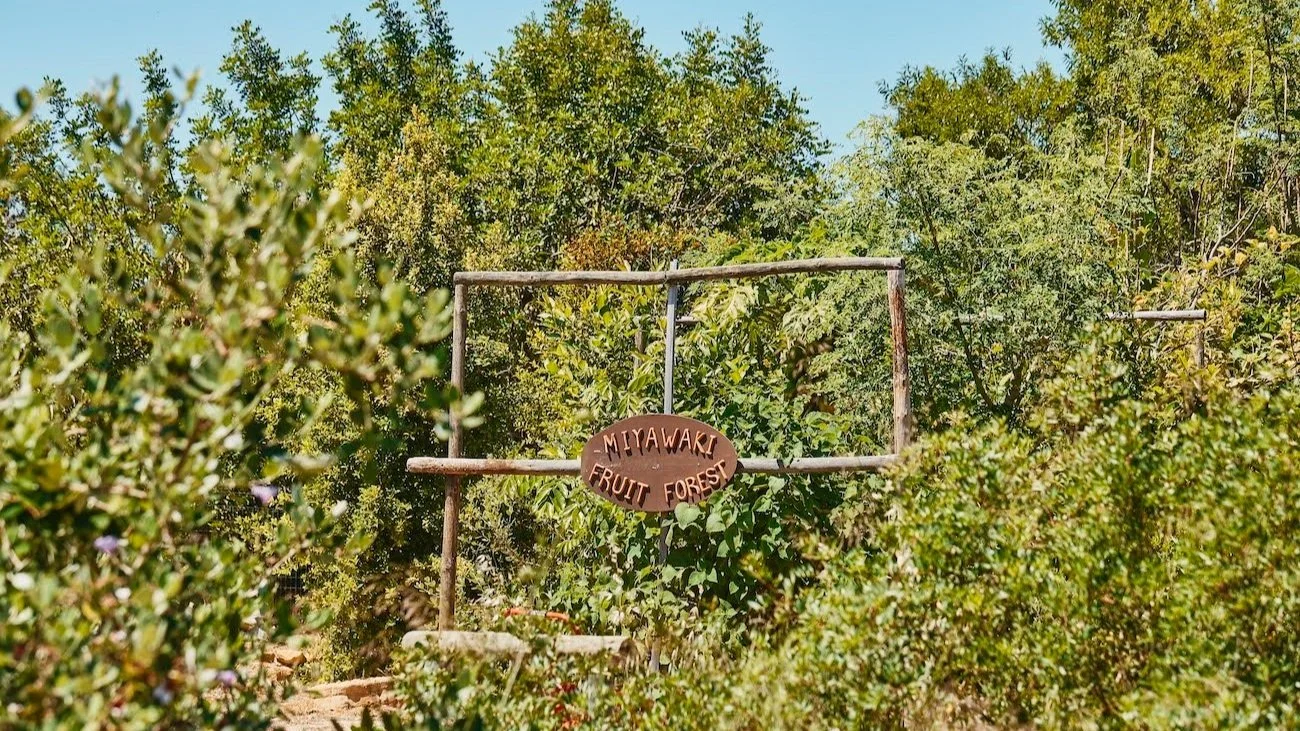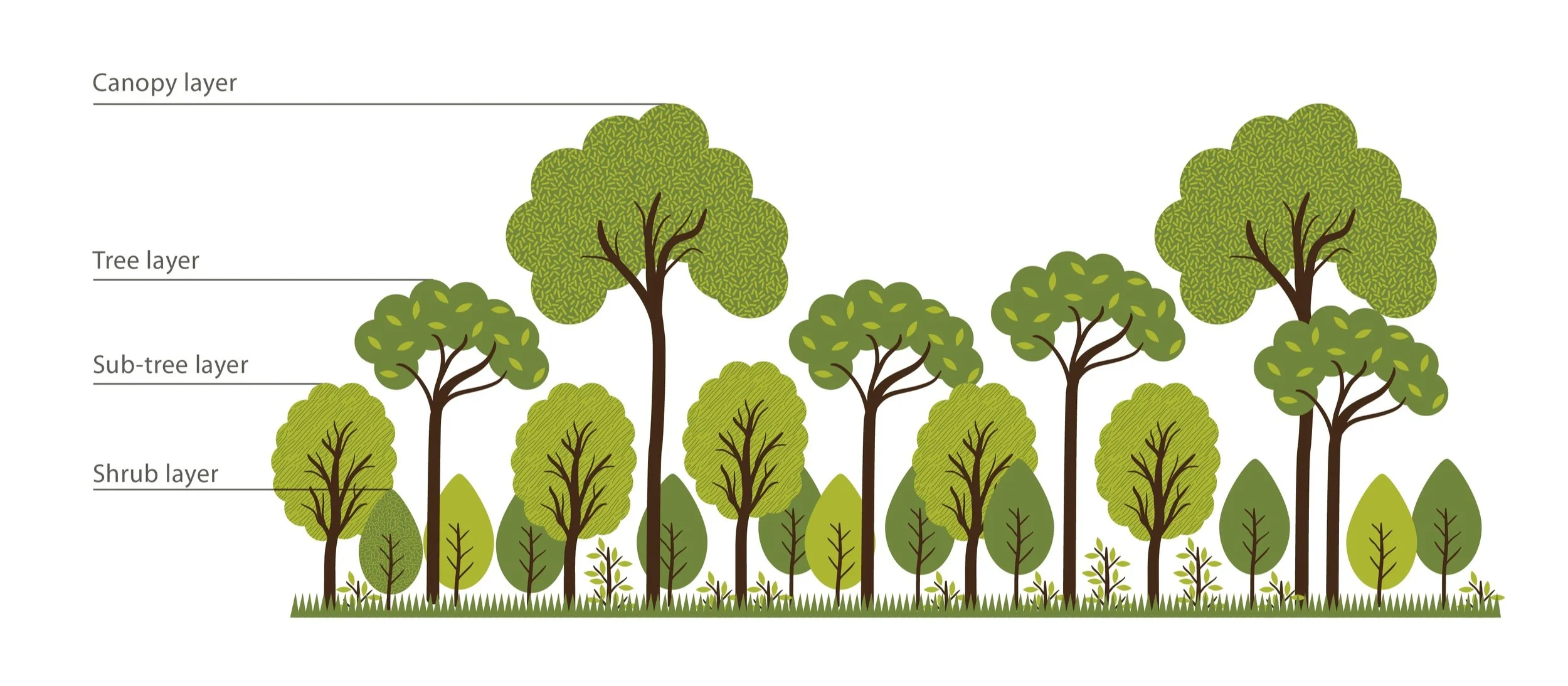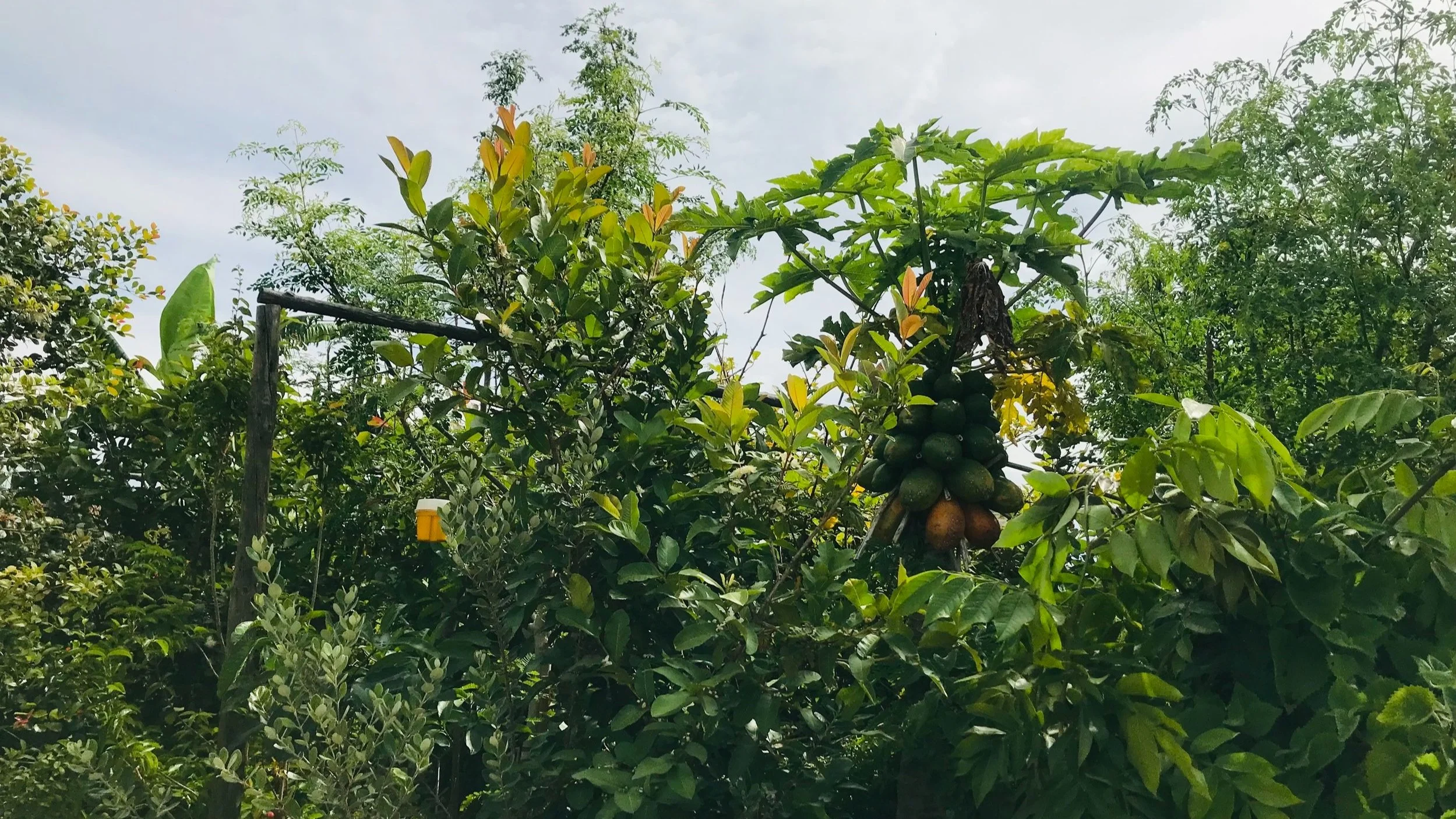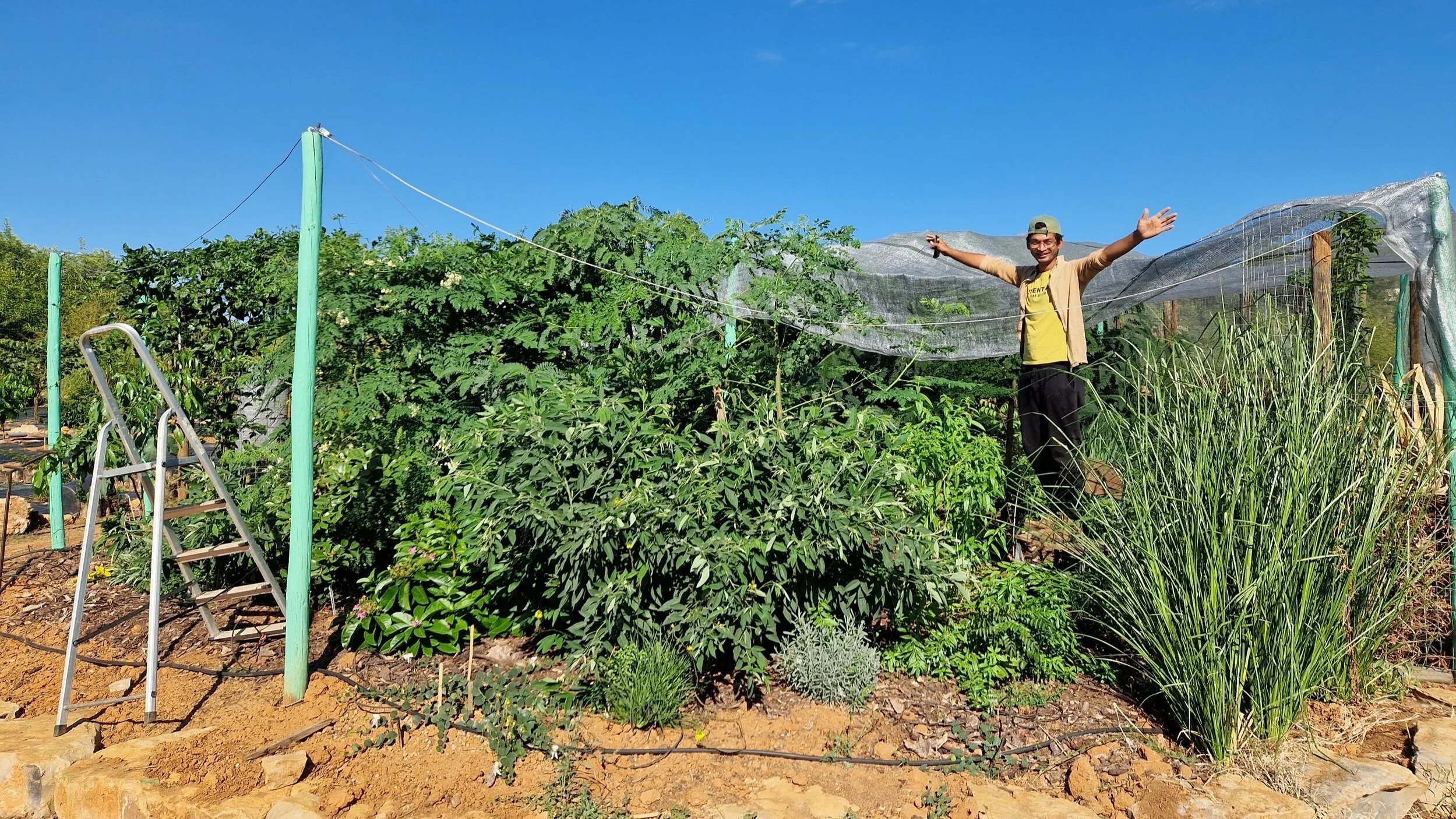Our Miyawaki-inspired Food Forests
What is the Miyawaki method?
The Miyawaki method is an afforestation approach designed to create dense, fast-growing forests, developed by the late Japanese botany professor Akira Miyawaki. Starting in the 1970s, professor Miyawaki advocated the value of natural forests and the urgent need to restore them. His method turned theory to practice.
Popping up more and more these days, especially in urban areas, Miyawaki Forests aim to provide a safe habitat for wildlife, as well as to contribute with several other important ecosystem services, such as cooling the surrounding environment, conserving water or contributing as significant carbon sequestration sinks. Also, these forests quickly become self-sustaining, typically requiring no maintenance after the first 3 years.
In our Insights from Miyawaki and Syntropic article, we looked further into the Miyawaki method, its advantages and disadvantages, while comparing it with another popular approach, Syntropic Farming.
Miyawaki forests are dense and multi-layered, being composed of different sizes of shrubs and trees. Picture credit: Afforestt
Putting the method to practice
To achieve the ambitious goals set by Miyawaki, we try to mimic a natural forest environment by:
Enriching the existing soil 🍄
To jump-start the tree-growing process, we restore soil fertility by deeply decompacting the planting area and then adding large amounts of plant compost and well-composted animal manure. A generous application of mulch and the inoculation of added organic matter with beneficial mycorrhizal fungi are also essential.Designing a multi-layered forest 🌳🌿
A wide variety of species is planted to recreate the layers of a natural forest: the shrub layer (up to 2 meters), the sub-tree layer (2 to 4m), the tree layer (4 to 12m) and the canopy layer (above 12m);Planting very densely and at the same time 🌱🌱🌱
If planted together in a good environment, plants will benefit from density. This creates a protective effect and a competition for light which makes the trees grow very fast. It will also reduce evaporation. Normally, we’re talking about a density of 3 trees/m² in a minimum area of 10m²;Caring for and protecting all the baby trees 💧
We keep the soil moist and weeds-free for the first 3 years. If we plant during the summer, we add a shade net, giving them a canopy-like protection, that also protects the plants from the wind.
A 2-year-old, very productive, Miyawaki forest at the Orchard of Flavours, Luz de Tavira. This in, in fact, our Miyawaki-inspired Experiment #1, the one we call our Wild Food Forest
The Orchard of Flavours’ vision:
A Miyawaki-inspired Food Forest
As we’ve seen, Professor Akira Miyawaki’s goal with his method was to restore natural forests, so it’s not surprising that his choice of plants would be restricted to species which are considered native, as those are usually seen as being better adapted to a given local environment and landscape.
However, as you probably know, the Orchard of Flavours Botanical Garden has a mission to enrich the local landscape with more flavours, giving a special focus to fruit trees and other edible plants of warm climates, since the Algarve conditions allow for growing them.
Unlike Professor Miyawaki, our aim is to grow diverse and productive orchards and Food Forests, and it’s a fact that the large majority of appetizing fruit trees are not indigenous to Southern Europe. At the same time, we believe that adapting to the changing climate (another mission of ours) will be easier if we accept and use species which might already be better equiped to our new conditions, such as more drought-tolerant productive plants.
Garden Steward Milan NEPALI removing the shade cloth off our Miyawaki-inspired Food Forest experiment #3 (Semi-organized). At 2,5-months-old, many trees had reached over 2 meters.
Sources and additional information on Miyawaki Forests:
As already mentioned, we wrote another article focusing on the Miyawaki method, which you can read for further details. Adding to that, you can also check these other sources about the approach:
The Better India — How to Grow a Forest Using The Miyawaki Method In Minimal Space
The Guardian — Fast-growing mini-forests spring up in Europe to aid climate
Citizen Matters — How to make a mini forest with Miyawaki method
Afforest YouTube channel — Forest Creation Tutorials playlist
Urban Forests — The Miyawaki method – Data & concepts
For a critical view:
The Conversation — Méthode Miyawaki : pourquoi les « microforêts » ne sont pas vraiment des forêts
This article was compiled by Miguel COTTON, Jackson KNIGHTS & José Luís C. PEREIRA, and later revised by Miguel PEREIRA. If you have any questions or suggestions, do not hesitate to contact us. Please write us anytime at miguel@orchardofflavours.com.




